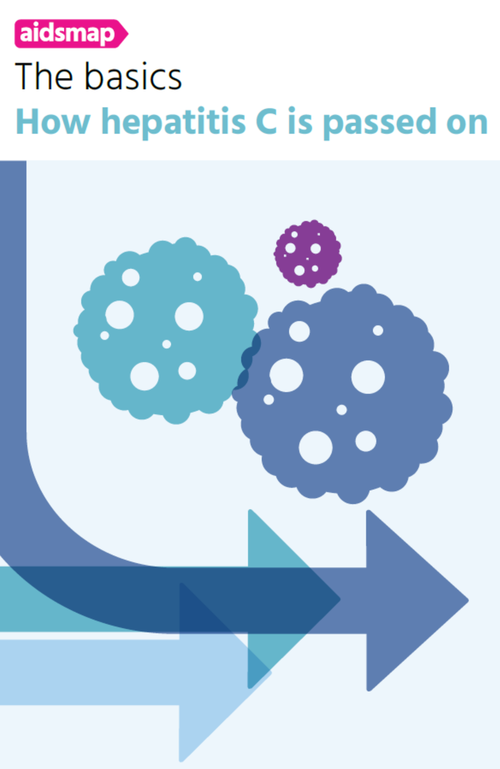
Gay and bisexual men who acquire hepatitis C infection while using pre-exposure prophylaxis for HIV prevention are part of the same sexual networks and have the same risk factors as HIV-positive men who acquire hepatitis C, a study of men in London reports in the Journal of Viral Hepatitis.
The research, carried out at five sexual health clinics in England, recruited gay and bisexual men diagnosed with acute (recent) hepatitis C infection during 2017. The study was designed to investigate whether HIV-negative men who acquire hepatitis C have the same risk factors as HIV-positive men and whether recently infected men formed part of a larger transmission network.
Although the rate of hepatitis C infection in HIV-negative men has been much lower than in HIV-positive men, not only in England but in other European countries, research in men using PrEP in France and the Netherlands has shown an increasing rate of hepatitis C acquisition in recent years.
Also, in the PROUD study of PrEP carried out in England between 2012 and 2014, two people were infected with hepatitis C for every 100 person-years of follow-up, and the incidence of hepatitis C appeared to rise further during the post-trial follow-up period between 2014 and 2016, indicating that hepatitis C acquisition among HIV-negative gay and bisexual men is becoming a significant public health problem (Desai).
A retrospective cohort study has shown that acute hepatitis C infections have declined substantially among HIV-positive gay and bisexual men in the United Kingdom, coinciding with increased access to direct-acting antiviral treatment and very high rates of hepatitis cure among HIV-positive men. Hepatitis C incidence among gay and bisexual men attending HIV clinics peaked in 2015 at 1.45 cases per 100 person-years of follow-up, falling to 0.46 cases per 100 person-years in 2018, a 68% reduction (Garvey).
Viewed in this context, the incidence rate observed in the PROUD study among HIV-negative men can be recognised as high.
To investigate transmission networks and risk factors for hepatitis C acquisition, Dr Daniel Bradshaw of Public Health England and colleagues recruited 16 HIV-negative and 24 HIV-positive men with recently acquired hepatitis C (positive antibody and HCV [hepatitis C virus] RNA test within 12 months and/or acute hepatitis). HIV-negative men were younger (34 years vs 44 years, p = 0.021), all lived in London, almost half were born outside the United Kingdom (43%) and 81% reported PrEP use in the previous year. Thirty per cent were diagnosed with a sexually transmitted infection at the same time as hepatitis C.
HIV-positive men had well-controlled HIV infection (91% had an undetectable viral load) but also had a high frequency of sexually transmitted infections. Twenty per cent had syphilis and overall, 29% had an STI at hepatitis C diagnosis.
Although none of the men reported sharing of injecting equipment, a third of men reported injecting drug use within the previous year. In 94% of men methamphetamine was the last drug injected and overall, 52% reported methamphetamine use. HIV-negative men were more likely to report use of GHB/GBL (75% vs 37%), but with this exception, patterns of drug use did not differ according to HIV status. Seventy-seven per cent reported nasal drug use and 42% reported rectal drug use.
HIV-negative men reported more sexual partners in the preceding year (36 vs 16), but in all other respects, sexual histories did not differ according to HIV status. Sixty-two per cent reported fisting, 79% reported group sex, 92% reported condomless anal sex, 30% reported the sharing of douche equipment, 37% reported a history of anal bleeding. The sharing of lubricant (67%) and sex toys (50%) was common.
Awareness of having sex with partners with hepatitis C was low. Only one-in-four HIV-negative men were aware of a partner with hepatitis C in the previous 12 months and even fewer HIV-positive men knew that they had sex with a partner with hepatitis C (12%).
Two-thirds were infected with genotype 1a and 25% with genotype 4. Genetic analysis of genotype 1a virus samples showed that 90% were very closely related, forming four genetic clusters and several pairs, indicating transmission networks. All clusters included both HIV-negative and HIV-positive men.
The study investigators conclude that awareness of hepatitis C transmission routes should be promoted among gay and bisexual men, through PrEP clinics, social networking apps and sex-on-premises venues. Three-monthly testing using an antigen test or HCV RNA test is essential, as antibodies may take longer than three months to emerge. Development of a home test for hepatitis C may also improve diagnosis.
Clinics providing PrEP and HIV treatment should ensure that they are talking about drug injecting during sex and harm reduction with gay and bisexual men, as well as supplying sterile injecting equipment, the study investigators recommend. Harm reduction and behaviour change are likely to be essential for achieving micro-elimination of hepatitis C among gay and bisexual men, even if very high levels of treatment coverage can be achieved, they say.
Desai M et al. High incidence of hepatitis C virus infection observed in the PROUD study of HIV pre-exposure prophylaxis. Journal of Viral Hepatitis, advance online publication, April 2020.
https://doi.org/10.1111/jvh.13297
Garvey LJ et al. Decline in hepatitis C virus (HCV) incidence in men who have sex with men living with human immunodeficiency virus: progress to HCV microelimination in the United Kingdom? Clinical Infectious Disease, advance online publication, March 2020.
https://doi.org/10.1093/cid/ciaa021
Bradshaw D et al. Transmission of hepatitis C virus in HIV-positive and PrEP-using MSM in England. Journal of Viral Hepatitis, advance online publication, March 2020.

